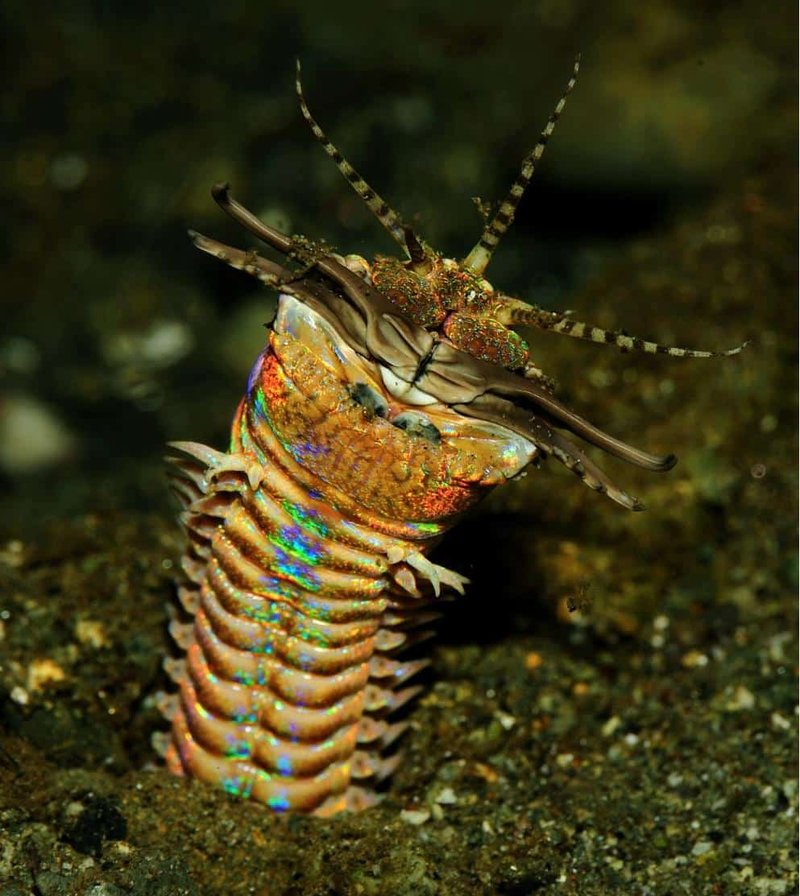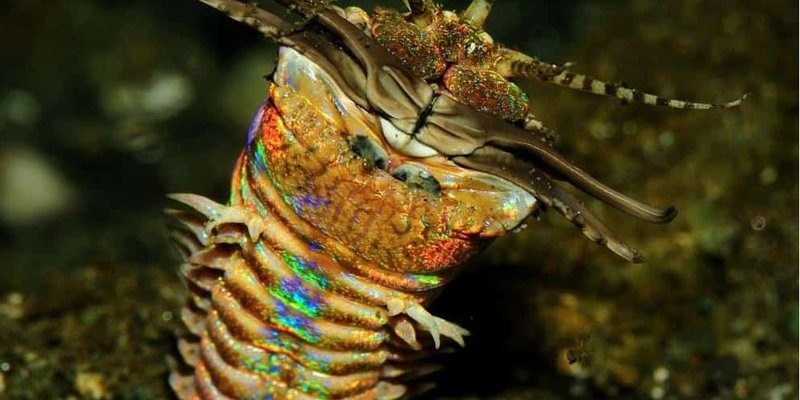
Polychaetes are a diverse group of worms that mostly live in marine environments. They come in different shapes, sizes, and lifestyles. Some are tiny and innocent, while others, like the Bobbit worm, are equipped with powerful jaws and a fierce hunting style. When we compare these creatures, we get a clearer picture of their roles in the ecosystem and what makes each of them unique.
What Are Bobbit Worms?
Bobbit worms, scientifically known as *Eunice aphroditois*, are stunning and mysterious marine creatures typically found in shallow waters. Known for their vibrant colors, they can range from greenish to reddish-brown. But it’s their hunting abilities that make them stand out. These worms generally hide in burrows, extending only their heads to catch prey. With their sharp, scissor-like jaws, they can strike at lightning speed, snatching fish and other critters before they even know what hit them.
You might be wondering how big these worms actually get. Well, some can reach lengths of around three meters (about ten feet)! That’s longer than a lot of people’s living room! Despite their intimidating size, they’re not hazardous to humans. They do, however, play a crucial role in their marine ecosystem.
Polychaete Worms: A Diverse Family
Polychaetes make up a vast family of worms, with over 10,000 species identified. They can be found in a variety of environments, from deep sea trenches to tidal pools. The common thread among these worms is their segmented bodies. This segmentation allows for a range of functions, like movement and burrowing, and helps them adapt to various habitats.
You’ll find that some polychaetes are quite vibrant and colorful, adding beauty to the ocean floor. Others are more drab and blend in with their surroundings. Some live a more sedentary lifestyle, while others are active hunters, like the Bobbit worm. Each species brings its own unique characteristics to the table, making polychaetes particularly interesting to study.
Differences in Habitat and Lifestyle
One of the most striking differences between Bobbit worms and other polychaetes is their habitat. Bobbit worms prefer sandy or muddy substrates in shallow waters. They create intricate burrows to hide from predators and ambush their prey. On the other hand, some other polychaete species thrive in reefs or rocky environments, where they can anchor themselves and filter feed.
Take the feather duster worm, for instance. Unlike the Bobbit worm, which is a fierce predator, the feather duster uses its feathery crown to filter plankton from the water. This difference in lifestyle points to the incredible adaptability within the polychaete class. It’s like comparing a lion to a bird; both are incredible in their own right but lead vastly different lives.
Feeding Habits: The Hunter vs. The Filter Feeder
Feeding habits are a huge part of what sets Bobbit worms apart from other polychaetes. As mentioned, Bobbit worms are ruthless hunters. They can detect movement in the water, allowing them to strike with incredible speed. Their powerful jaws can snap up fish and crustaceans, making them top predators in their environment.
In contrast, many polychaetes, like the fan worm, have a more passive approach to eating. They extend their tentacles to catch tiny food particles drifting by. This filter feeding method requires patience and strategic placement in the water, but it allows these worms to consume a steady diet without the need for predatory aggression. It’s interesting to see how different feeding strategies have evolved, providing each worm with its unique niche in the ecosystem.
Reproduction: A Closer Look at Polychaete Life Cycles
Reproduction is another area where Bobbit worms and other polychaetes differ greatly. Bobbit worms reproduce sexually, with males and females releasing their eggs and sperm into the water, where fertilization happens. The larvae then develop in the water column before eventually settling down to become adults.
On the flip side, many polychaetes display a fascinating array of reproductive strategies. Some can produce asexually, budding off new individuals while still attached to the parent. Others form cocoons where they lay their eggs, offering protection to their young during development. This diversity is a testament to the adaptability of polychaetes in various environments.
Interactions and Ecological Importance
Bobbit worms and other polychaetes play vital roles in their ecosystems. As predators, Bobbit worms help control the populations of smaller fish and invertebrates. This predatory action maintains a balance in the food web, contributing to the health of marine life.
Other polychaetes, especially filter feeders, improve water quality by removing excess nutrients and particulates from the water. They also serve as essential prey for various marine animals, supporting the broader ecosystem. By understanding these interactions, we can appreciate the complexity of life beneath the waves and the importance of each species, no matter how different they may seem at first glance.
Why Understanding These Worms Matters
So, why should we care about comparing Bobbit worms to other polychaetes? Ecosystems are complex webs where every species plays a role. Understanding how these worms interact with their environment can help us protect and preserve marine ecosystems.
By learning about these creatures, we can raise awareness of their habitats and the challenges they face, including pollution and climate change. Every bit of knowledge helps us make better choices for the ocean and all its inhabitants.
In conclusion, while Bobbit worms and other polychaete species may seem worlds apart, they are part of a larger tapestry of marine life that is both beautiful and critical to our planet’s health. Whether it’s the fierce Bobbit worm lurking in the sand or a colorful feather duster swaying with the currents, every worm has its place, and understanding them helps us appreciate the richness of ocean biodiversity.

